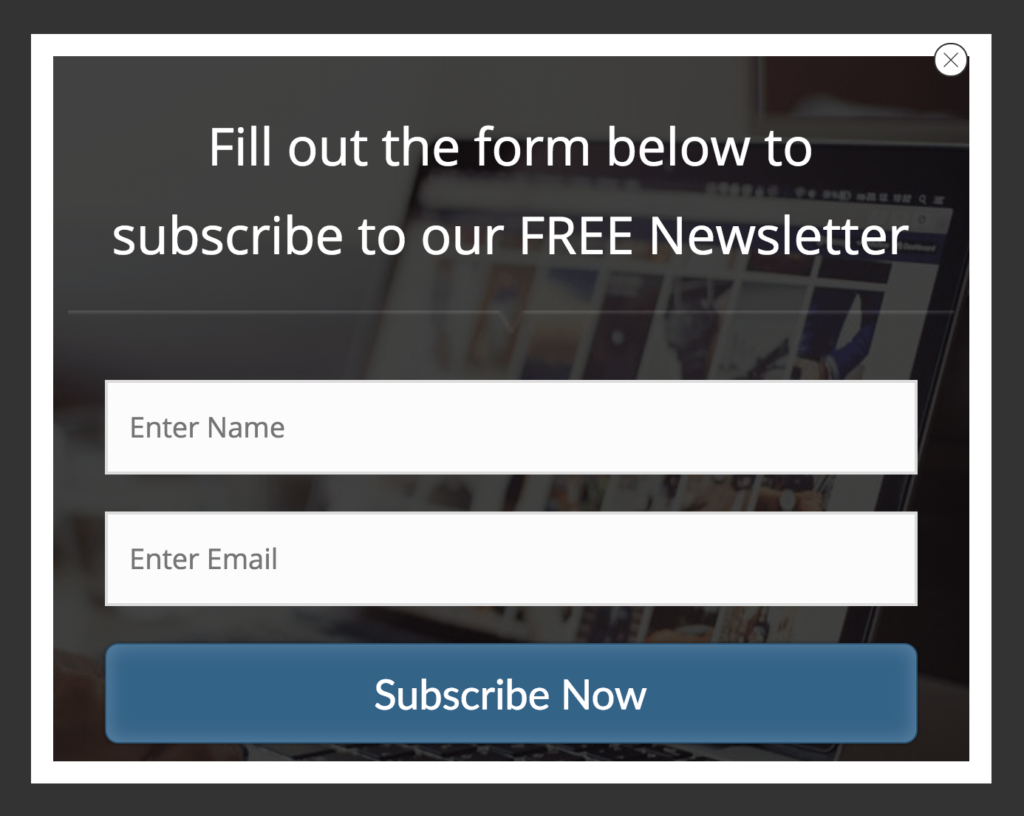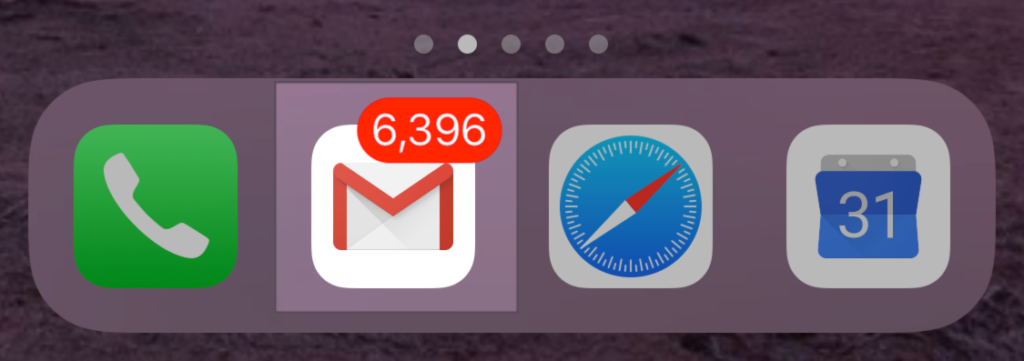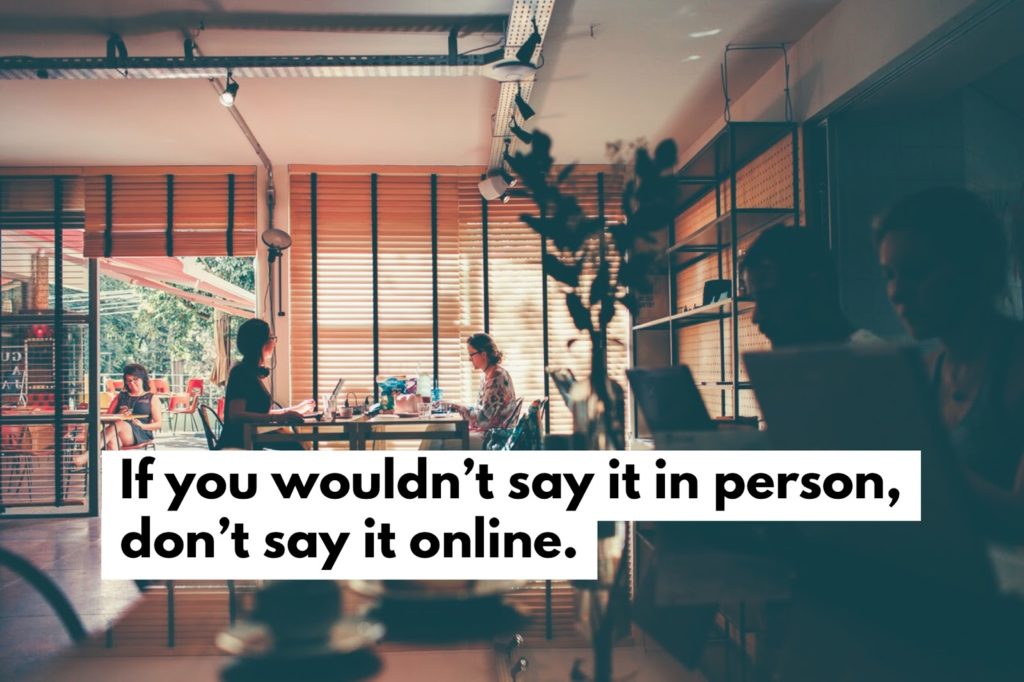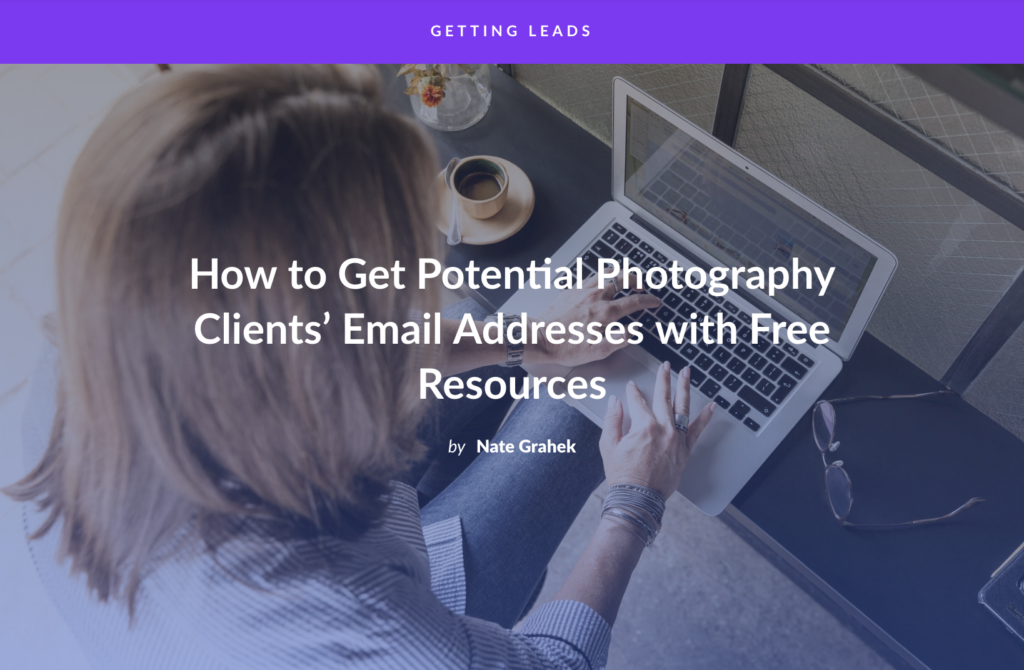There’s nothing new about email…
At least, not as far as the concept goes. It’s probably been the main way you’ve communicated professionally — in your photography business or otherwise — since you graduated college, and the mechanics of it are pretty much the same.
But the way people consume email? That’s a different story.
Over the last several years, the email marketing game has completely changed. Many of the strategies that booked tons of new photography clients just five years ago are now overused and ineffective.
Open rates aren’t what they used to be. Bookings from flash-sale email promotions aren’t what they used to be. Unsubscribes have skyrocketed.
In other words, the way most photographers use email marketing is outdated.
The good news is that updating your photography business’s email marketing isn’t as hard as it may seem. Right now, we’ll walk through the 6 key areas of email marketing that have changed the most in the past few years and how every photographer should update their strategy.
1. The Call to Action (CTA)
The Old Way: “Subscribe to My Free Newsletter”
For years now, most businesses — including photography businesses — have featured the same boring call to action on their homepage.
Somewhere beneath the logo and menu bar on their site, there’s a large form or button that says something like Subscribe to My Newsletter or For the latest news, enter your email address.

It’s typically the first thing visitors see when they visit a website.
The Reason
With email marketing outperforming every other channel of digital advertising, it makes sense that business owners desperately want to collect email addresses of their potential clients.
Offering a newsletter signup is the simplest, most straightforward way to accomplish this.
Someone visits a site, likes what they see, and hands over their email address so they can stay in the loop. Easy peasy, right?
The Problem
The reality is, nobody wakes up in the morning and says, “I wish I got more email. I need to sign up for some newsletters today.”
According to DMR, the average office worker already receives 121 emails each day! We’re constantly bombarded with newsletters, spam, sales alerts, company updates, personal messages, and work emails.

Since we already deal with all of that noise in our inboxes, there’s no incentive to sign up for another monthly newsletter… especially if we’re unsure we’ll get any value from it.
The New Way: “Get the Free Email Course”
Instead of asking website visitors to subscribe to a generic newsletter, we’ll ask them to subscribe to an email course — a sequence of emails that delivers a free, valuable resource for potential clients, spread out over time.
It’s important to point out that an email course is slightly different than a traditional lead magnet.
A lead magnet is something you offer a potential client in exchange for their email address. It’s a free, downloadable resource that gives a ton of value to your target market — typically a PDF, EBook, or video.
Some examples include:
- 5 Tips for Better Engagement Photos
- The Top 10 Wedding Vendors in Bethesda, Maryland
- 5 Tips for Taking Better Images with Your iPhone
- 10 Tips for Choosing the Right Wedding Photographer
- Pricing Guide
Like a traditional lead magnet, an email course also delivers a free, high-value resource to potential clients, but it’s delivered in a different way.
When someone opts in for a lead magnet, they’re giving permission for you to send ONE email with ONE downloadable resource. When someone opts in for an email course, though, they’re giving you explicit permission to send them MULTIPLE emails, which has two huge advantages:
1. An email course takes a large block of information that would otherwise fill up a multi-page PDF and breaks it down into bite-sized chunks that are delivered over time. This keeps them from being overwhelmed with long-form digital content (which very few people actually read anymore).
2. An email course gets readers in the habit of opening and reading your emails. The engagement with multiple emails (not just one email) starts to build familiarity with you and your brand, which leads to a relationship of trust between you and the reader.
***For more on building your free resource, see How to Get Potential Photography Clients’ Email Addresses with Free Resources
Keep in mind that choosing a photographer is a difficult process. Every photographer is different. We’re priced differently. We have different styles of working, shooting, and editing. We offer different products and services.
That can be really confusing for most people, especially when they have a limited amount of time to choose a photographer.
Instead of being annoyed by the confusion and stress felt by your audience, embrace it.
Choose to be the friendliest photographer possible — someone that can guide them through this important, difficult decision with a helpful email course. When you do that, you’ll rise to the top and win their business by standing out as the expert photographer that helped them the most.
2. The Follow-Up
The Old Way: Delayed Response
The Reason
Getting an email address from a new lead is a huge win for any photographer.
Now you get to sit back and wait until your next sales promotion email goes out and they’ll book a session. The hard part’s over, right?
The Problem
If you don’t respond to a new lead as soon as they give you their email address, chances are you’ll never hear from them again.
They were interested, but by not hearing back from you right away, they lose interest and forget all about you.
The New Way: Immediate Automated Response
As with any new relationship, first impressions with your photography business are worth their weight in gold!
You need to reciprocate their interest with an immediate, enthusiastic response that thanks them for giving you their email address and then provides immediate value. If they’ve opted in for your email course, they should receive their first email within seconds of subscribing.
Obviously, doing this manually is unrealistic. No photographer can stare at their inbox all hours of the day, waiting for new inquiries to follow up with. To respond immediately, this MUST be automated.
By automating the sequence, you can rest easy knowing all new leads will receive your best content the instant they subscribe.
3. The Follow-Through
The Old Way: Coming Up Short
The Reason
In the past, marketers have been so eager to get new subscribers that they’ve made promises they couldn’t keep. For example, they may offer a weekly newsletter, daily tips, or a 5-part course to entice new people to sign up.
But, after a while, things get busy and they start to slip and under-deliver. The weekly newsletter becomes a monthly newsletter. Those daily tips actually come out once per week. The 5-part email sequence is actually just a single email.
The Problem
You’ve probably heard the phrase, People hire who they know, like, and trust.
When you under-deliver on your promises, not doing what you say you’re going to do, this takes a serious toll on trust.
The New Way: Keeping Your Promises
The fix is simple: do what you say you’re going to do.
For example, you grab someone’s attention with an exciting free resource that promises 10 new tips in a 10-part email course. After they opt in, send all 10 emails.
It might sound obvious, but it’s incredibly important because it all comes back to building trust.
The simplest way to build trust over time is to do what you say you’re going to do, even in things as insignificant as sending the number of emails you promised. This demonstrates that you’re experienced at following through with the bigger promises you make to your photography clients after they’ve actually hired you.
4. The Focus
The Old Way: Self-Focused
The Reason
Using self-focused language isn’t a problem that’s unique to photographers. Every business has a tendency to talk too much about themselves in their marketing material.
Ninety-nine percent of the time, it’s completely innocent. The photographer isn’t trying to talk about themselves out of arrogance or self-centeredness — they’re just trying to get potential clients to book a session by convincing them that they’re a talented, capable photographer.
The Problem
Just like in face-to-face interactions, talking too much about yourself over email often pushes others away.
This may be hard to hear, but the truth is, your leads don’t really care about what you do. They don’t care about how many weddings or senior portraits you shot last year. They don’t care about how many lenses you have or even how many years you’ve been honing your skills.
Your potential clients only care about what you can do for them. By talking too much about yourself and not talking enough about them, they’ll grow bored and ignore you.
The New Way: Client-Focused
If your potential clients don’t care about you (and only care about themselves), what are you going to talk about? You don’t know them personally, so what do you say?
Your potential clients have wants and needs. They care about finding solutions to their problems. They care about your experience, portfolios, and shooting techniques only to the extent that it can get them what they want.
Start by giving them what they want: solutions to their problems and answers to their questions. This is another reason why offering an email course is so effective. It gives you the perfect opportunity to start the conversation off with what they want to hear. You can gradually sprinkle in your personality but start by focusing on them and their wants and needs.
In your other emails, if you’re worried you might be coming across as too self-focused, read it allowed to yourself and follow this rule: if you wouldn’t say it to them face-to-face over a cup of coffee, don’t say it over email.

5. The Promotion
The Old Way: Unsolicited Promotions
The Reason
When a photographer is about to host a new mini-session, what better way to get bookings than by sending out an email blast to your entire list with discounts and special offers, right?
The Problem
Here’s the catch: a mass promotional email to your contact list that they didn’t ask for is spam.
Sure — the word “spam” is loaded with negative connotations. But even if you have the purest of intentions, if you send a mass email that they didn’t ask to receive, you’re technically spamming them.
Doesn’t every business do this?
A ton of them do. Unsolicited promotional emails are by far the most common email sent today. Your inbox is full of them. BUT, this is also the reason every email provider has SPAM filters. It’s the reason GDPR is so important.
People hate spam, and while you may book several clients with these types of emails, it’s not a viable long-term email strategy.
The New Way: Emails by Permission
Not sending spam is as simple as it sounds: Don’t do it.
The best email marketers tell their subscribers ahead of time that they’ll send them newsletters and the occasional special deal, but they always give them the option to not receive it by unsubscribing.
If you really want to promote something, promote it through your newsletter, onboarding email sequence, or email course — but don’t get in the habit of sending out monthly promotional emails to hundreds of people.
6. The Value
The Old Way: Emailing Image Galleries
The Reason
When a photographer wraps up a session they’re proud of, it’s completely natural to want to share those images with their email list. They think, “If someone on my list is looking for a photographer and sees these images, they’ll definitely choose me.”
The Problem
Unfortunately, no one (other than the clients in the pictures) really cares about the last session — and they definitely don’t want an email with 20 hi-res images taking up space on their iPhone.
Sharing a list of images over email — or a link to the blog post with the images — isn’t unique and doesn’t stand out. It may have worked five years ago when they were the only photographer in town, but now, everyone does it.
After a while, people get in the habit of ignoring or unsubscribing from their emails because they don’t want to see a bunch of images they don’t care about.
The New Way: Emailing Your Wisdom
Instead of emailing a list of images, email your wisdom.
Remember, your potential clients don’t care about what you can do — they care about you can do for them.
Send practical, educational tips that will help them gain new insight or solve a problem they’ve been experiencing. This builds trust by showing your expertise in a non-self-centered way.
To be fair, many photographers ask, “Why would I want to teach my potential clients tips? How does teaching them to take better pictures on their iPhones help my business?”
Well, someday, those potential clients will want to be in the pictures. They’re not going to hang selfies on their walls, right? And when the time comes to choose a professional photographer to take pictures of them, who will they think of first?
They’ll think of the helpful photographer that taught them how to get better images with their own camera.
When you tap into and share the wisdom you have with your target market, it makes you stand out from your competition and keeps you in the forefront of your leads’ minds when they have to choose a professional photographer or refer one to a friend.

